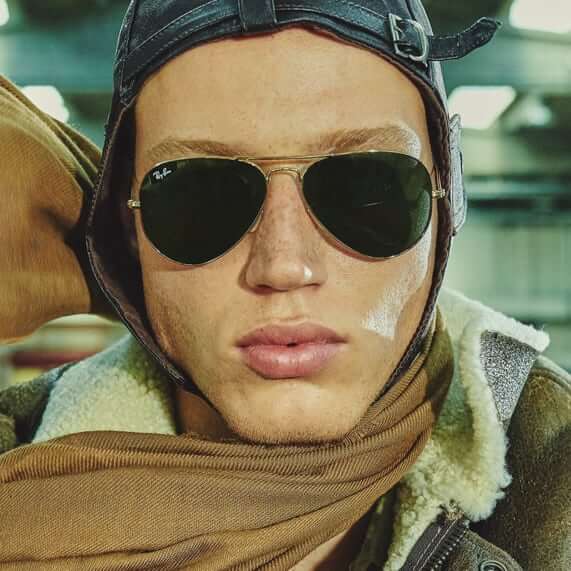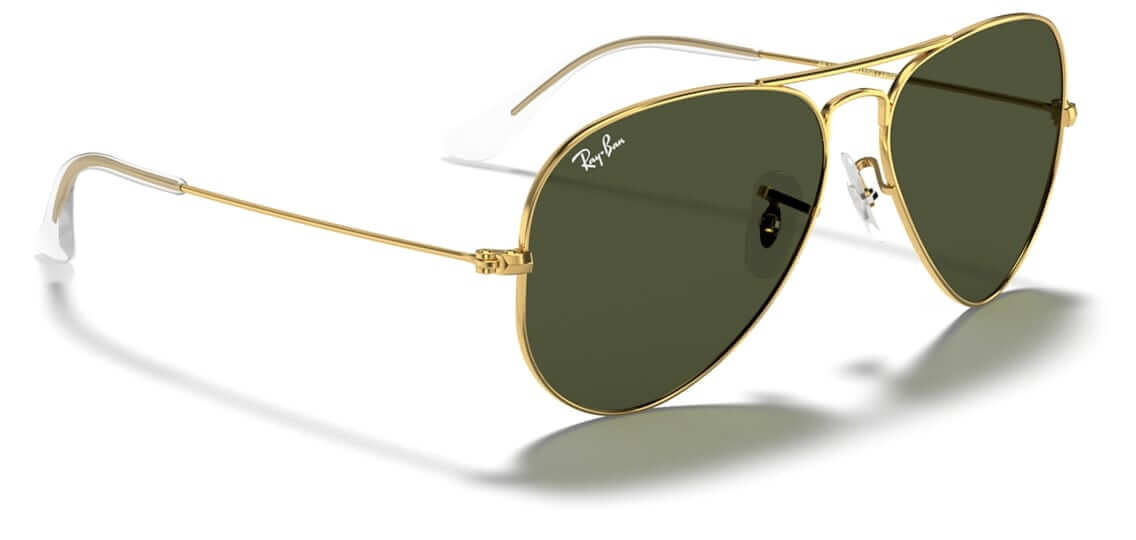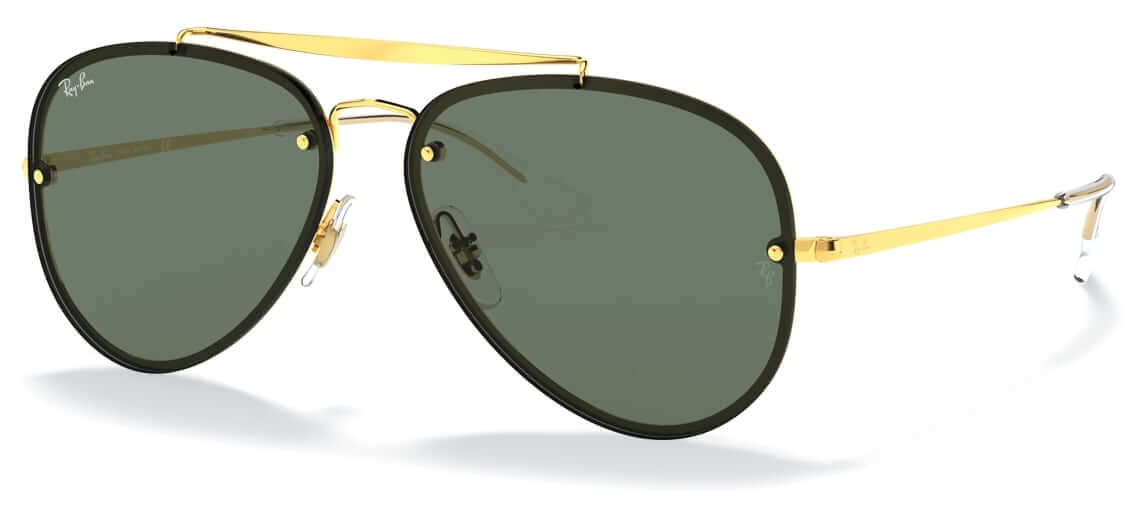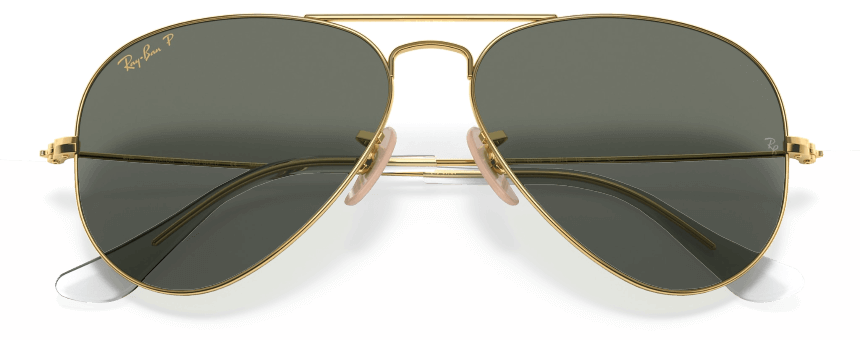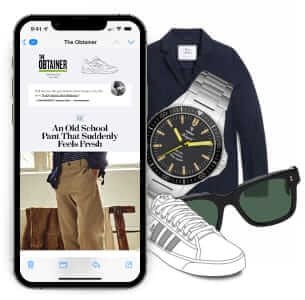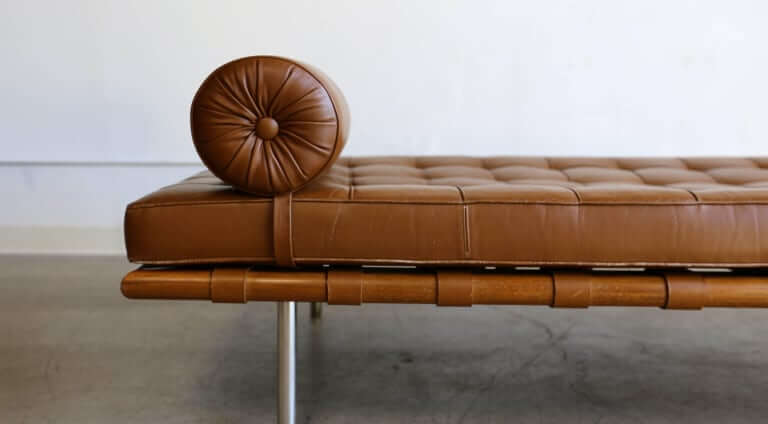Anatomy of a Classic
Ray-Ban Aviators
The world’s most versatile and practical shades
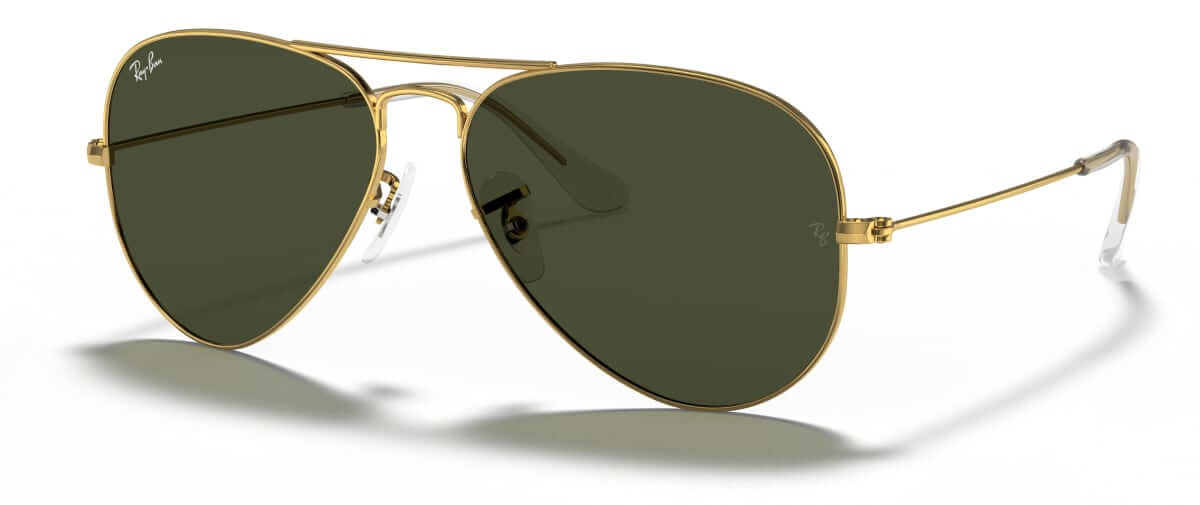
With their substantial proportions, curvilinear shape and double bridge between the brows, a pair of aviator sunglasses are unmistakeable. And have been for decades—84 years to be exact. As Ray-Ban celebrates the anniversary of their signature shades this month, let's look back at how this pioneering style came to be.
In the mid-1930s, the latest aeronautic technology now allowed people to fly higher and farther than ever before. But many U.S. Air Force pilots quickly found that the glare from the sun was giving them headaches and altitude sickness. New glasses were needed to replace the simple goggles being worn at the time.
In 1936, Bausch & Lomb—then a New York-based medical equipment manufacturer—created a pair of sunglasses that were lighter, thinner, and “more elegantly designed” than the crude standard-issue eyewear of past generations. The frames were originally plastic and outfitted with green mineral glass lenses that could cut out the glare without obscuring vision or fogging up.

They proved so popular, the Ray-Ban brand was born a year later, so that they could be marketed to civilians. The sunglasses were redesigned ever so slightly and upgraded with a metal frame. They were given the moniker “Aviator Glasses,” and the iconic style has remained virtually unchanged for more than eight decades. Why? Well, for starters, the design is simple and sophisticated. And secondly, they have the uncanny ability to look good on just about any face shape or structure.
The aviator's popularity really soared when photos of General Douglas MacArthur wearing them in the Philippines became lasting images of World War II. The first advertisements for Ray-Ban Aviators stated they would provide “real scientific glare protection” but it was their general badass appeal that seemed to connect with customers.
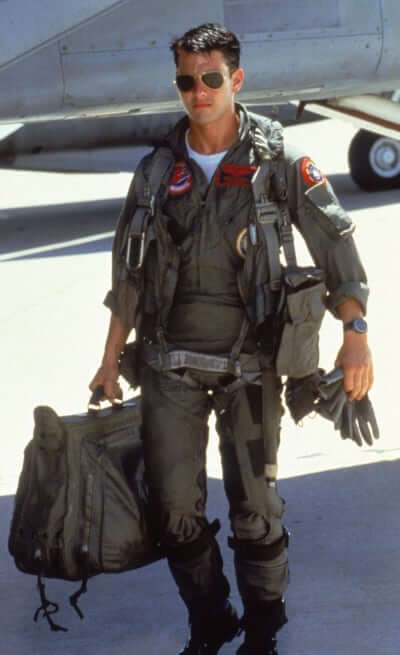
During the 1950s, Aviator shades were a part of the post-war culture, mimicking military style. In the '60s and '70s they were worn on stage by the likes of Bob Dylan and on the race track by Steve McQueen. While their popularity waned in the early '80s, a little film about fighter pilots, called Top Gun, reintroduced the iconic sunglasses to a whole new generation.
This was no mere coincidence. In fact, it was part of a now legendary and incredibly lucrative deal signed with a company called Unique Product Placement that inserted several Ray-Ban frames into a handful of films and TV shows. But this was one of the biggest. The result? Sales of Aviator sunglasses rose by more than 40% in the year following the release of the movie. To say that revived the pubic's infatuation with the shades would be an understatement.
The original green tint, dubbed G-15, featured a unique layer that was developed by Bausch & Lomb scientists to filter out much of the bright blue light a pilot's eyes would be exposed to when flying above the cloud line. The “15” in the name refers to the 15% of visible light able to pass through, so they're best for bright sunny areas. Today, Ray-Ban offers a wide range of tints, gradients and mirror finishes with or without lens polarization—a special film that helps them to reduce glare from reflected light even further. Of course, the G-15 lens are is still beloved as a classic choice.
As fads come and go, true icons never go out of style. And just because something is a classic doesn't mean it has to be boring. Right now, Ray-Ban offers nearly three dozen variations on the legendary Aviator frame—not including the DIY Custom Lab, which lets you completely customize your perfect pair. Plus now, more than ever, vintage styles offer an air of exclusivity. Which means, you can find plenty of discontinued styles and handsome pairs with years of patina being sold online.
Blaze Aviator,
$183 by Ray-Ban
Commemorate the Occasion
Ray-Ban has made 84 pairs of solid gold Aviators to commemorate the brand’s 84th anniversary. Crafted from 18-carat yellow gold, they’re finished with polarized G-15 glass lenses. Each pair is individually numbered on the inner temple, and they come with both a certificate of authenticity and a classic leather carrying case.
Aviator solid gold, $3,454 by Ray-Ban
